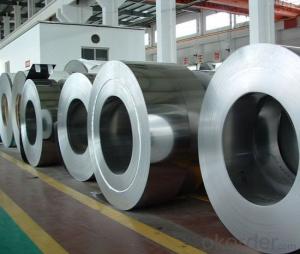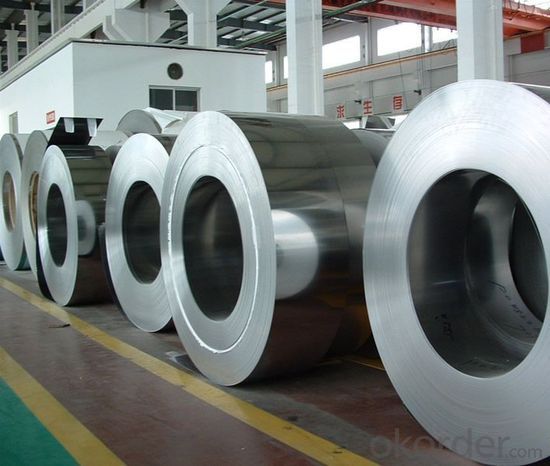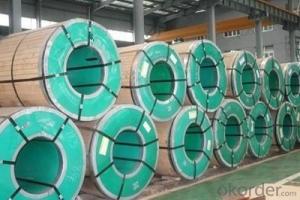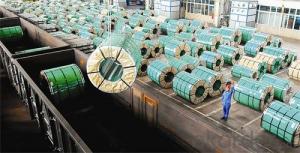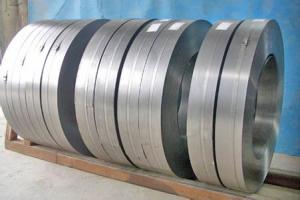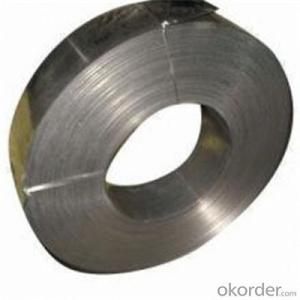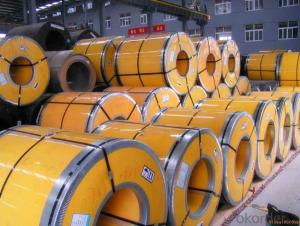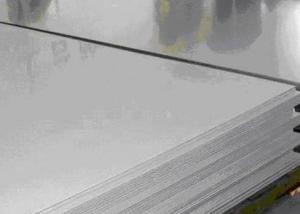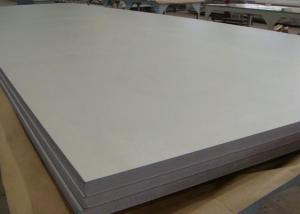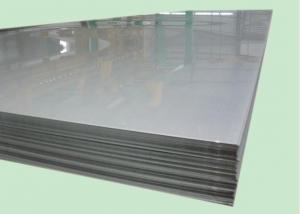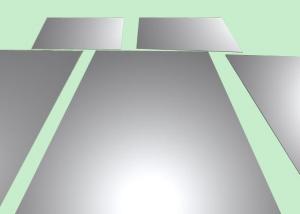Hot Rolled Stainless Steel Strip With Good Quality
- Loading Port:
- Tianjin
- Payment Terms:
- TT OR LC
- Min Order Qty:
- 25 m.t.
- Supply Capability:
- 100000 m.t./month
OKorder Service Pledge
OKorder Financial Service
You Might Also Like
Hot Rolled Stainless Steel Strip With Good Quality
1.Structure of Hot Rolled Stainless Steel Strip With Good Quality
Hot rolled stainless steel strip with good quality is widely used in many areas including the industry and our life. And as the raw material, it is one of the raw material of the cold rolled stainless steel strip, which can be used directly in many places. Stainless Steel (Stainless Steel) is short for acid-proof Stainless Steel, resistant to weak corrosive medium such as air, steam, water, or with a Stainless Steel grade.
2.Main Features of Hot Rolled Stainless Steel Strip With Good Quality
1) weldability: There are two diffierent kinds of the preformance:1 Kind of tableware generally do not require the performance of welding, even including some pot class enterprise. But the vast majority of products all need raw materials welding performance is good, like the 2 kinds of tableware, thermos flask, steel pipes, water heaters, water dispensers, etc.
2) Corrosion resistance The vast majority of stainless steel products for corrosion resistant performance is good, like a, 2 kinds of tableware, kitchen utensils and appliances, water heaters, water dispensers, etc., some foreign businessmen on corrosion resistance of products also do experiment: in NACL aqueous solution heated to boiling, after a period of time the best solution, wash and drying, weight loss, to determine the degree of corrosion (note: the product polishing, because of the sand cloth or sandpaper containing Fe, will cause the test surface rust spots)
3) Polishing performance In today's society stainless steel products in production after polishing the process commonly, when only a small number of products such as water heaters, water dispenser tank don't need polishing. So this will require materials polishing performance is very good. The factors influencing polishing performance mainly include the following: 1) raw material surface defects. Such as scratch, pitting, pickling, etc. (2) raw material problem. Hardness is too low, easy when polishing cast light (BQ), and the hardness is too low, the surface easily when deep drawing appear orange peel phenomenon, which affects the BQ. Relatively high hardness of BQ sex is good. (3) after deep drawing products, great deformation area surface will be a small black spots and RIDGING, thus affecting the BQ.
4) Heat resistant performance Heat resistant performance refers to the high temperature stainless steel can still maintain its excellent physical and mechanical properties. Carbon: the influence of carbon in austenitic stainless steel is formed strong and steady. Set the austenitic austenitic area and expand elements. Carbon formation of austenite is about 30 times that of the nickel, the ability of carbon is a kind of gap elements, through the solid solution strengthening can significantly increase the strength of the austenitic stainless steel. Carbon austenitic stainless steel can be improved in high concentration chloride (e.g., 42% MgCl2 boiling solution) in the performance of the resistance to stress corrosion. But, in the austenitic stainless steel, carbon is often seen as the harmful elements, this is mainly due to the corrosion of stainless steel used in some conditions, such as welding or heating by 450 ~ 850 ℃), carbon steel with chromium in forming high chromium Cr23C6 type carbon compounds which can lead to local chromium depletion, make steel corrosion resistance especially resistant to intergranular corrosion performance degradation. So. Since the 60 s of the development of new cr-ni austenitic stainless steel is mostly carbon content less than 0.03% or 0.02% of the ultra-low carbon type
5) Corrosion resistance When the atomic number of no less than 12.5% chromium content in steel, can make the steel electrode potential mutations, the negative potential to the positive electrode potential. To prevent electrochemical corrosion.
3. Hot Rolled Stainless Steel Strip With Good Quality Images
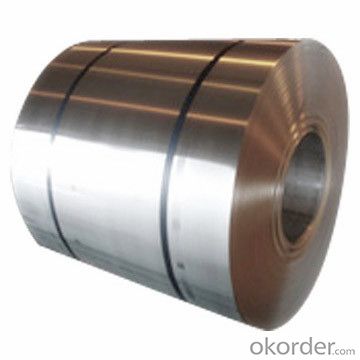
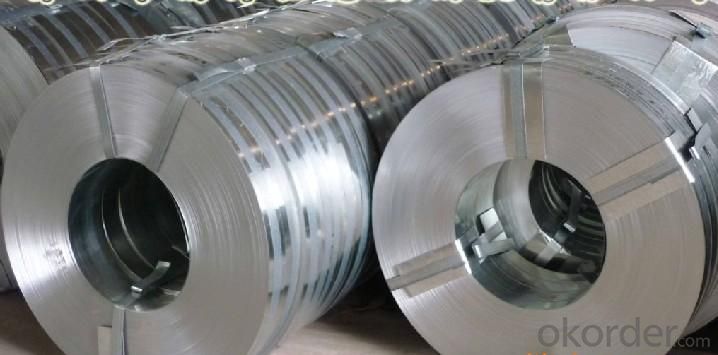
4. Hot Rolled Stainless Steel Strip With Good Quality Specification
1) Ferritic stainless steel Chromium containing 15% ~ 30%. Its corrosion resistance, toughness and weldability with chromium content increases with the increase of chloride stress corrosion resistance is superior to other types of stainless steel, fall into this category of Crl7, Cr17Mo2Ti, Cr25, Cr25Mo3Ti, Cr28, etc. Ferritic stainless steel because of the high chromium content, corrosion resistance and oxidation resistance are relatively good, but the mechanical properties and process performance is poorer, more used to stress less acid structure and steel used as antioxidant. This kind of steel to withstand atmosphere, nitric acid and corrosion of the brine solution, and has good high temperature oxidation resistance, low thermal expansion coefficient, etc, used in nitric acid and food factory equipment, also can make work under high temperature parts, such as gas turbine parts, etc.
2) Austenitic stainless steel The title Chromium is more than 18%, still contain about 8% of the nickel and small amounts of molybdenum, titanium, nitrogen and other elements. Good comprehensive performance, corrosion resistant to a variety of media. Number of austenitic stainless steel is commonly used one cr18ni9, 0 cr19ni9, etc. In the Wc < 0.08% 0 cr19ni9 steel, steel grade is marked as "0". This class contains large amounts of Ni and Cr in steel, make steel in austenitic state at room temperature. This kind of steel has good plasticity and toughness, weldability and corrosion resistance and non-magnetic or weak magnetic, the corrosion resistance in oxidizing and reducing medium are good, used to make acid equipment, such as corrosion resistant containers and equipment lining, pipelines, nitric acid resistant equipment parts, etc., also can be used as the main body of watches and clocks jewelry stainless steel material. Austenitic stainless steel with solid solution treatment, the steel heating to 1050 ~ 1150 ℃, then water-cooled or air-cooled, for single-phase austenitic organization.
3) Austenitic, ferritic duplex stainless steel The advantages of both austenitic and ferritic stainless steel, and has the superplasticity. Austenite and ferrite The title Each accounts for about half of the stainless steel. In the case of contain low C, Cr content was 18% ~ 18%, Ni content at 3% ~ 3%. Some steel containing Mo, Cu, Si, Nb, Ti, N and other alloying elements. This kind of steel both austenite and ferrite stainless steel, the characteristics of compared with ferrite, plasticity and toughness is higher, no room temperature brittleness, intergranular corrosion resistance and welding performance were significantly increased, while maintaining a ferritic stainless steel of 475 ℃ brittleness and high thermal conductivity, has the characteristics of superplasticity. Compared with austenitic stainless steel, high strength and resistance to intergranular corrosion and resistance to chloride stress corrosion is improved obviously. Duplex stainless steel has excellent resistance to pitting corrosion performance, is also a kind of nickel and stainless steel.
4) Precipitation hardening stainless steel For austenitic or martensite structure matrix, and the number of precipitation hardening stainless steel commonly used such as 04 cr13ni8mo2al. It can pass the precipitation hardening (also known as the age hardening) dealing with the hard (strong) of stainless steel.
5) Precipitation hardening stainless steel For austenitic or martensite structure matrix, and the number of precipitation hardening stainless steel commonly used such as 04 cr13ni8mo2al. It can pass the precipitation hardening (also known as the age hardening) dealing with the hard (strong) of stainless steel.
5.FAQ of Hot Rolled Stainless Steel Strip With Good Quality
We have organized several common questions for our clients,may help you sincerely:
①How about your company?
A world class manufacturer & supplier of castings forging in carbon steel and alloy steel,is one of the large-scale professional investment casting production bases in China,consisting of both casting foundry forging and machining factory. Annually more than 8000 tons Precision casting and forging parts are exported to markets in Europe,
②How to guarantee the quality of the products?
We have established the international advanced quality management system,every link from raw material to final product we have strict quality test;We resolutely put an end to unqualified products flowing into the market. At the same time, we will provide necessary follow-up service assurance.
③How to get the best quotation from your company?
You can send us your detail requirement on the specification and the quantity you need every month, if the specification is normal, and the quantity is large enough for our regular prodution, you will get our best quotation.
- Q: Can stainless steel strips be used in solar panels?
- Yes, stainless steel strips can be used in solar panels. Stainless steel is a durable and corrosion-resistant material, making it suitable for use as a component in solar panels. It can be used as a support structure or as part of the wiring and connectors within the panels.
- Q: Are 111 stainless steel strips suitable for high-pressure applications?
- No, 111 stainless steel strips are not suitable for high-pressure applications. These strips are typically made of low-carbon stainless steel, which lacks the necessary strength and resistance to handle high-pressure environments. For high-pressure applications, it is recommended to use stainless steel strips with higher grades such as 300 series (e.g., 304 or 316) or duplex stainless steels, which have superior mechanical properties and corrosion resistance.
- Q: Can stainless steel strips be used in packaging machinery?
- Yes, stainless steel strips can be used in packaging machinery. Stainless steel is a versatile and durable material that is commonly used in machinery and equipment, including packaging machinery. It offers excellent resistance to corrosion, high temperature, and wear, making it suitable for various packaging applications. Stainless steel strips can be used in packaging machinery for tasks such as cutting, sealing, and forming packaging materials. Additionally, stainless steel's smooth surface and easy-to-clean properties make it an ideal choice for maintaining hygiene and preventing contamination in the packaging process. Overall, stainless steel strips are a reliable and efficient option for use in packaging machinery.
- Q: Are stainless steel strips resistant to pitting and crevice corrosion?
- Yes, stainless steel strips are generally resistant to pitting and crevice corrosion. Stainless steel is known for its corrosion resistance properties, and it contains a significant amount of chromium, which forms a protective layer on the surface of the steel when exposed to oxygen. This layer, called the passive film, prevents the steel from reacting with its environment and protects it from corrosion, including pitting and crevice corrosion. However, the resistance to corrosion can vary depending on the specific grade and composition of stainless steel, as well as the conditions it is exposed to. It is important to choose the appropriate grade of stainless steel for the specific application to ensure optimal resistance to pitting and crevice corrosion.
- Q: Can stainless steel strips be used in the food processing conveyors?
- Food processing conveyors can indeed utilize stainless steel strips. Stainless steel is a favored option for food processing equipment due to its resistance to corrosion, hygienic properties, and ease of cleaning. Conveyor belts commonly incorporate stainless steel strips because they provide robustness and durability while ensuring the preservation of food safety and preventing contamination. The seamless surface of stainless steel further impedes the accumulation of bacteria, rendering it appropriate for employment in the food industry. Moreover, stainless steel is non-reactive, guaranteeing that it does not affect the taste or interact with the food being transported. Overall, the dependability, hygiene, and corrosion resistance of stainless steel strips make them an outstanding selection for food processing conveyors.
- Q: What are the factors affecting the fatigue strength of 111 stainless steel strips?
- The fatigue strength of 111 stainless steel strips can be affected by several factors. 1. Material composition: The chemical composition of the stainless steel, including the presence of alloying elements such as chromium, nickel, and molybdenum, can significantly impact its fatigue strength. Higher levels of these elements generally result in higher fatigue strengths. 2. Surface finish: The surface finish of the stainless steel strips can influence their fatigue strength. A smoother surface finish can reduce stress concentrations and improve the fatigue resistance. 3. Heat treatment: The heat treatment process used in manufacturing the stainless steel strips can affect their fatigue strength. Proper heat treatment can enhance the material's microstructure, resulting in improved fatigue resistance. 4. Presence of defects: The presence of defects such as cracks, notches, or inclusions can significantly reduce the fatigue strength of stainless steel strips. These defects act as stress concentrators, leading to premature failure under cyclic loading. 5. Loading conditions: The applied loading conditions, including stress amplitude, mean stress, and loading frequency, can affect the fatigue strength of stainless steel strips. Higher stress amplitudes, mean stresses, or frequencies can reduce the material's fatigue life. 6. Environmental factors: The environment in which the stainless steel strips are used can impact their fatigue strength. Factors such as temperature, humidity, and presence of corrosive media can accelerate fatigue crack initiation and propagation. 7. Manufacturing processes: The manufacturing processes used to produce the stainless steel strips, including rolling, annealing, and surface treatments, can influence their fatigue strength. Proper control of these processes is essential to ensure optimal fatigue performance. 8. Design considerations: The design of the stainless steel strips, including geometry, thickness, and stress concentration areas, can affect their fatigue strength. Design modifications such as fillets or radii at stress concentration areas can help improve fatigue resistance. Overall, understanding and controlling these factors are crucial for optimizing the fatigue strength of 111 stainless steel strips and ensuring their reliable performance under cyclic loading conditions.
- Q: What are the different finishes available for stainless steel strips?
- There are several different finishes available for stainless steel strips, each offering unique characteristics and aesthetic appeal. 1. No. 1 Finish: This is a hot-rolled annealed and descaled finish, which provides a dull, rough, and matte surface. It is commonly used in industrial applications where appearance is not a significant concern. 2. No. 2D Finish: This finish is also known as a "dull" finish and is achieved by cold-rolling the stainless steel strip after the annealing process. It has a smoother and more reflective appearance compared to the No. 1 finish. 3. No. 2B Finish: This is a bright, cold-rolled finish that is commonly used in commercial and residential applications. It has a smooth and reflective surface, making it suitable for decorative purposes. 4. No. 3 Finish: Also known as a "semi-polished" finish, it is achieved by using a 120-150 grit abrasive. This finish provides a smoother and more uniform appearance compared to the previous finishes. 5. No. 4 Finish: This is one of the most popular finishes for stainless steel strips. It is achieved by using a 150-180 grit abrasive, resulting in a brushed or satin-like appearance. It is often used in architectural and decorative applications. 6. No. 6 Finish: This finish is achieved by using a 240 grit abrasive, resulting in a finer brushed appearance compared to the No. 4 finish. It is commonly used in high-end architectural and decorative applications. 7. No. 7 Finish: This is a highly reflective mirror-like finish achieved by using a 320 grit abrasive. It provides a polished and sleek appearance and is often used in decorative applications. 8. No. 8 Finish: This is the highest grade mirror-like finish available for stainless steel strips. It is achieved by using a 400-600 grit abrasive, resulting in a flawless and reflective surface. It is commonly used in high-end architectural, automotive, and decorative applications. These different finishes allow for versatility in design and functionality, catering to various industries and aesthetic preferences.
- Q: Are stainless steel strips resistant to nitric acid corrosion?
- Yes, stainless steel strips are generally resistant to nitric acid corrosion. Stainless steel contains a high amount of chromium, which forms a protective layer on the surface when exposed to oxygen. This layer, known as the passive layer, prevents the metal from reacting with the surrounding environment, including nitric acid. However, it is important to note that the resistance to nitric acid corrosion can vary depending on the specific alloy and concentration of nitric acid. In some cases, prolonged exposure to high concentrations of nitric acid or elevated temperatures may cause corrosion or pitting on the surface of stainless steel strips.
- Q: Are stainless steel strips resistant to scaling?
- In general, stainless steel strips exhibit resistance to scaling. Scaling occurs when metals are subjected to high temperatures, resulting in the formation of oxide layers on their surfaces. Stainless steel contains chromium, which creates a passive oxide layer on its surface. This oxide layer serves as a formidable defense against scaling by hindering additional oxidation and scale formation. Nonetheless, it is crucial to acknowledge that the level of resistance to scaling can differ based on the particular grade and composition of the stainless steel employed, as well as the temperature and environmental conditions to which it is exposed.
- Q: Can stainless steel strips be used in pressure vessel manufacturing?
- Certainly, pressure vessel manufacturing can utilize stainless steel strips. Stainless steel, an alloy of steel with a minimum chromium content of 10.5%, offers remarkable corrosion resistance and durability. These attributes render stainless steel strips appropriate for pressure vessel manufacturing, enabling them to endure high-pressure surroundings and fend off corrosion caused by diverse substances. Moreover, stainless steel excels at maintaining its structural integrity even under elevated temperatures, making it an optimal selection for pressure vessel applications necessitating heat resistance.
Send your message to us
Hot Rolled Stainless Steel Strip With Good Quality
- Loading Port:
- Tianjin
- Payment Terms:
- TT OR LC
- Min Order Qty:
- 25 m.t.
- Supply Capability:
- 100000 m.t./month
OKorder Service Pledge
OKorder Financial Service
Similar products
Hot products
Hot Searches
Related keywords
